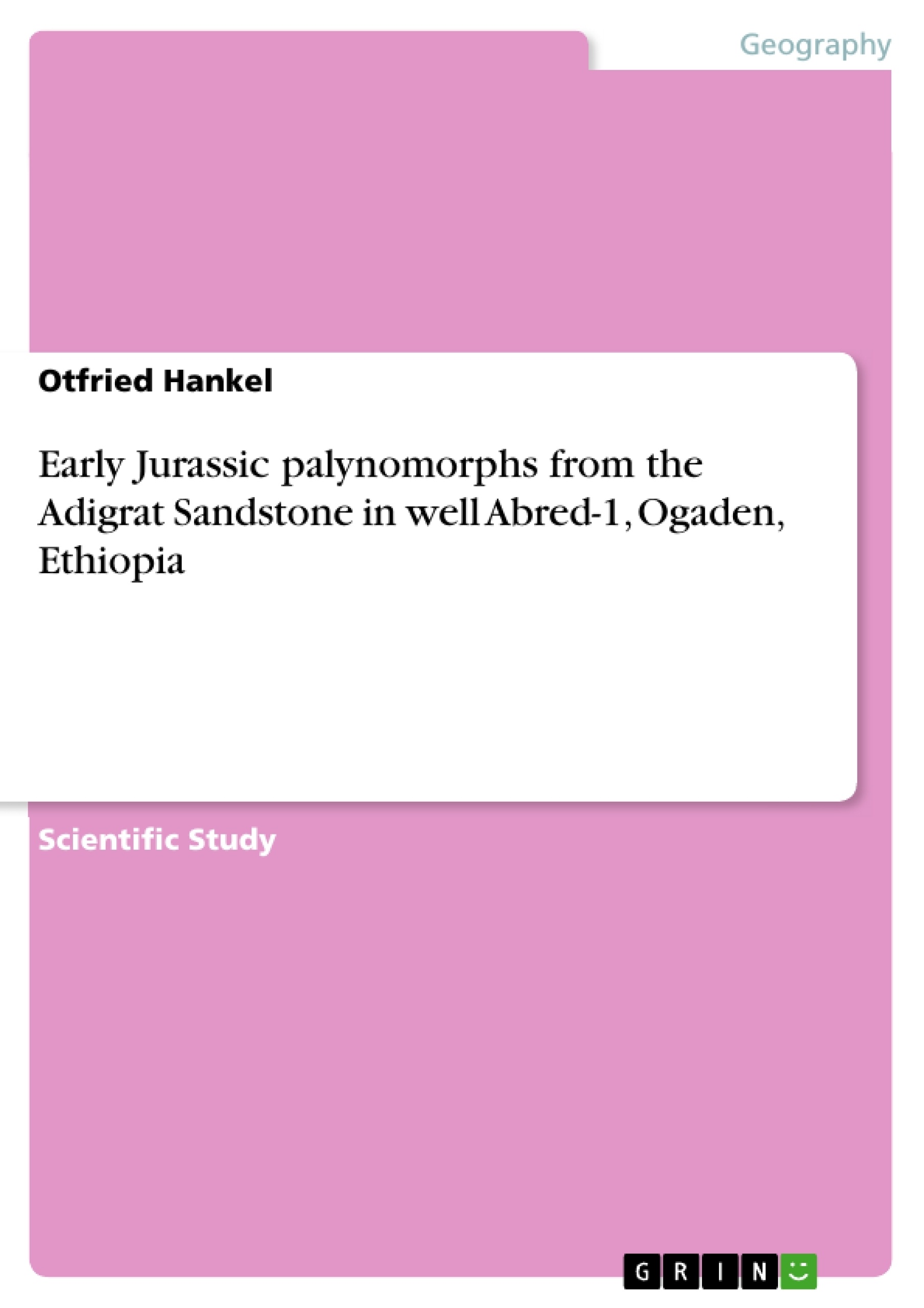Excerpt
ABSTRACT
Palynomorphs have been recovered from the Adigrat Sandstone in the subsurface of the southeastern Ogaden region of Ethiopia. Core samples from well Abred-1 have yielded rich and well-preserved assemblages which are characterized by the dominance of the pollen genus Classopollis (average frequency 93%). Significant accessory elements are Anapiculatisporites dawsonensis, Ceratosporites helidonensis, Foraminisporis tribulosus, Nevesisporites vallatus, Retitriletes semimuris, Araucariacites australis, Callialasporites turbatus, and Perinopollenites elatoides. The microflora can be correlated with the lower part of the Corollina torosa Zone of Australia. It is concluded, therefore, that the studied section is of Hettangian or Sinemurian age. Continental deposition of the Adigrat Sandstone occurred probably under hot and dry climatic conditions. The presence of small numbers of acritarchs indicates a restricted marine influence.
Introduction
Oil exploration wells drilled in the central part of the Ogaden Basin of Ethiopia have penetrated an up to 1600 m thick continental sequence below the marine Jurassic-Cretaceous succession. The continental strata are of Karoo age and have been subdivided into four units. In ascending order these are the Calub Sandstone, the Bokh Shale, the Gumburo Sandstone, and the Adigrat Sandstone (WORKU, 1988).
The term Bokh Shale is here replaced by the term Tulli Shale because the type section of the Bokh Shale in well Bokh-1 is of Early Palaeozoic age (HANKEL, 1994). The new type section proposed is the interval 3250 - 3636 m in well Tulli-1 (coordinates 44° 21' 45"E 06° 18' 10"N). The lacustrine sediments of this interval are underlain by the Calub Sandstone (3636 - 3958 m) and overlain by the Gumburo Sandstone (2808 - 3250 m).
An unpublished palynological study indicates a Late Permian age for the upper part of the Calub Sandstone, an Early Triassic age for the Tulli Shale, a Late Triassic age for the Gumburo Sandstone and an Early Jurassic age for the Adigrat Sandstone. The microfloral assemblages recorded in this previous study have been correlated with the Playfordiaspora crenulata Zone, the Lunatisporites pellucidus Zone, the lowert part of the Triplexisporites playfordii Zone and the lower and upper part of the Corollina torosa Zone of Australia (HANKEL, 1995a, b, c). The present paper deals with palynomorph assemblages from the Adigrat Sandstone.
Source of material
The material studied comes from well Abred-1 (coordinates 45° 14' 53"E 05° 30' 02"N) which was drilled by Gewerkschaft Elwerath in 1963 in the southeastern Ogaden region of Ethiopia. The core material is stored in the magazine of ExxonMobil Production Deutschland GmbH in Nienhagen near Celle.
The well reached a total depth of 3104.40 m. The drill floor elevation was 523 m above sea level. Arenaceous sediments drilled from surface to a depth of 170 m have been assigned to the Jesomma Sandstone. The bore then penetrated the marine Jurassic-Cretaceous succession (170 - 2950 m) and the underlying Adigrat Sandstone (2950 - 3070 m). Well Abred-1 bottomed finally in high grade metamorphic basement rocks (3070 - 3104.40 m) (ELWERATH, 1964).
For palynological analysis seven shale samples have been collected from a cored interval (3007.10 - 3023.80 m) in the middle part of the Adigrat Sandstone. The palynomorph yield of three samples from the lower part of the core was low. The other four samples from the upper part of the core, however, yielded rich and well-preserved palynomorph assemblages on which this study is based. These samples come from a depth of 3010.10 m, 3010.20 m, 3010.25 m, and 3014.90 m.
Techniques and storage of material
The samples have been processed using a standardized palynological technique as described in HANKEL (1991, p. 130). A number of strew slides were prepared in glycerine for each sample. After identification and counting of palynomorphs representative specimens have been picked from these slides for the preparation of single grain mounts (see Appendix). All specimens were photographed and are documented on film negatives. The material (remainders of the shale samples, maceration residues, strew slides, single grain mounts, and film negatives) is held at the author´s collection (catalogue nos. ET-191190 and ET-90-AB-1).
- Quote paper
- Dr. Otfried Hankel (Author), 2013, Early Jurassic palynomorphs from the Adigrat Sandstone in well Abred-1, Ogaden, Ethiopia, Munich, GRIN Verlag, https://www.grin.com/document/208243
Publish now - it's free






















Comments